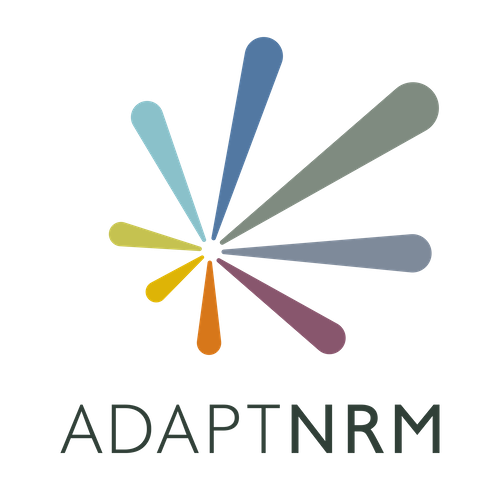Incorporating climate adaptation lens to NRM planning presents four key challenges. While elements of these challenges may not be new, climate adaptation may intensify the challenges, creating a need for even more innovative solutions. These include:
-
 Challenge 1. Making decisions for multiple possible futures
Challenge 1. Making decisions for multiple possible futures NRM planners must find ways to plan that are consistent with the range of likely futures and possible desired outcomes. This necessarily involves a degree of uncertainty, but this need not be a barrier to planning.
Recognising system uncertainty in planning
Future temperatures are projected to be 2-5 degrees above 1990 levels by the end of the century. The range of projections is far greater at the end of the century than in next few decades and creates greater uncertainty at longer timescales. Thus, planners need to have options that will allow for the desired outcome across this range of futures. At shorter timescales, this uncertainty is reduced, so decisions with a shorter timeframe can be made with more confidence.
-
 Challenge 2. Employing flexible and adaptive planning processes
Challenge 2. Employing flexible and adaptive planning processes New information will continue to emerge about the likelihood of future climates and consequences and planners may need to develop plans that are even more flexible and/or more rapidly adapted to incorporate this new information.
Flexible and Adaptive
Port Phillip & Westernport CMA in Victoria developed an alternative model for their recent Regional Catchment Strategy – an online strategy that can be updated at any time (http://www.ppwrcs.vic.gov.au/). There are multiple processes for updating the Strategy, so minor changes can be made easily while other changes that may have significant impact on the Strategy’s intent and direction would require Ministerial approval. These will be collated and approved yearly. The result is an NRM plan that can respond much more flexibly as new information becomes available.
-
 Challenge 3. Explicitly identifying and preparing for likely future decisions
Challenge 3. Explicitly identifying and preparing for likely future decisions Plans need to prepare for future decisions, including understanding which decisions need to be made now and which could or should be made later. This involves identifying and monitoring the triggers that indicate when a new decision needs to be made, and planning to gather information to support future decision-making.
Preparing for Future Decisions
When a pre-specified threshold, beyond which the capacity to manage is exceeded, is reached, reconsider the adaptation options that would allow a new decision to be implemented to manage the risk/s. In the time prior to a trigger point being reached, new information might also be gathered to support the use of the threshold, and/or the next decision.
-
 Challenge 4. Strengthening the adaptive capacity of people and organisations
Challenge 4. Strengthening the adaptive capacity of people and organisations There are many people and organisations that manage natural resources upon which communities depend. Successful development and implementation of NRM plans ultimately depends on the capacity of people to be flexible and adaptive throughout all phases of the planning and implementation process.
Looking after people and improving adaptive capacity
Climate change means the status quo is unlikely to persist. Change is the new normal, and supporting people to work under conditions of constant change will be an important element of NRM work. These supporting activities might include continued outreach and extension, fostering participation in planning, development of materials to aid decision making, and sharing lessons from other regions that have experienced a similar change.
Why does climate adaptation planning need to be different?
Approaches to NRM have been developed worldwide with regard to climate variability, but not with explicit consideration of a changing future climate and a moving baseline. For NRM planning, climate adaptation refers to the ways in which these planning and management approaches may need to be adjusted to better cope with the challenges imposed by a changing climate. Climate change combines with and influences non-climate pressures, adding further complexity to NRM planning and increasing the need for a flexible, iterative approach.
Climate change is dynamic, and climate models can provide a range of likely future climate scenarios, with greater certainty for the near term, and a wider range of possibilities at longer time scales. As a result, planning approaches that consider a range of possible futures and recognise the need to shift goals and actions over time will be most cost- effective given future uncertainty.
Want to know more about the different types of uncertainty? Visit the Adaptation Campus to learn more about types of uncertainty and basic ways to tackle them effectively in planning.

